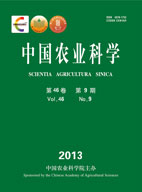-
Relationship Between Cropland Soil Arthropods Community and Soil Properties in Black Soil Area
- LU Ping, XU Yan-Peng, TAN Fei, YANG Zhong-Qi, LIN Ying-Hua
-
Scientia Agricultura Sinica. 2013, 46(9):
1848-1856.
doi:10.3864/j.issn.0578-1752.2013.09.012
-
 Abstract
(
796 )
Abstract
(
796 )
 PDF (660KB)
(
823
)
PDF (660KB)
(
823
)
 Save
Save
-
References |
Related Articles |
Metrics
【Objective】The characteristic of cropland soil arthropods community and soil properties under the disturbance of exogenous carbon and nitrogen was studied, to elucidate the effect of those disturbances on soil animal community.【Method】Using hand-sorting, modified Tullgren and Baermann’s methods, the cropland soil arthropods were collected from nine treatments, separately, i.e. Control (CK), exogenous carbon (C0.5, C1.0, C1.5, C2.0) and exogenous nitrogen (N0.5, N1.0, N1.5, N2.0) in the black soil area of Jilin during May to September of 2011, and the physic and chemistry character of the soil was also analyzed.【Result】A total of 70 485 individuals (111 unidentified) were collected, which belonged to eight classes, twenty orders, three suborders and 87 super-families. The individuals, groups and diversity of cropland soil arthropods were significantly affected by the sampling time and exogenous carbon and nitrogen. To compare to the control treatment(CK), soil organic carbon, soil total nitrogen, the C/N value of soil, individuals, group and diversity showed an increase in application exogenous carbon, while only soil total nitrogen, cropland individuals of soil meso-micro arthropods in application exogenous nitrogen. The number of individuals and groups were significantly correlated to soil moisture, soil temperature, soil organic carbon and soil respiration. Isotomidae and Dolichopodidae were both positively correlated to soil temperature and soil total nitrogen, while Mesostigmata, Oribatida and Onychiuridae positively correlated to soil organic carbon and soil respiration. The Redundancy analysis (RDA) showed that the dominant groups were significant effected by soil moisture, soil temperature and the C/N value of soil. The soil properties were much well explained by the dominant of cropland soil arthropod groups.【Conclusion】The composition and diversity of cropland soil arthropods were related to the sampling time and the types of exogenous, and affected by soil moisture, soil temperature and C/N value of soil. The cropland soil arthropod was sensitively indicator to inflect the changes in soil properties.









